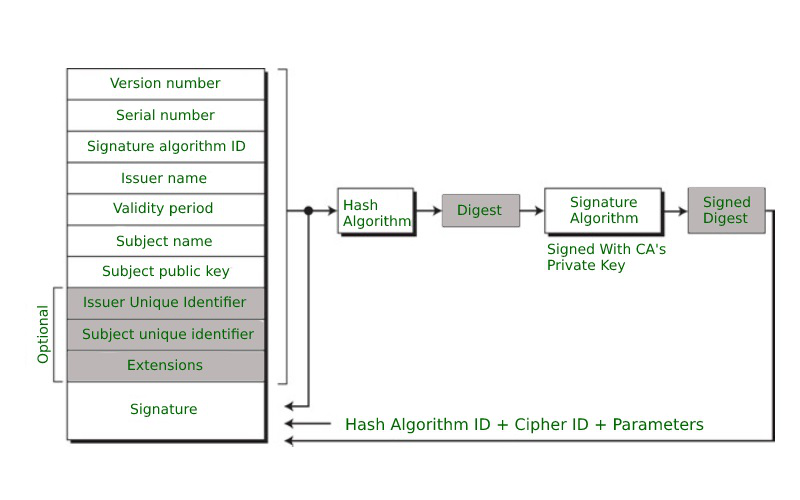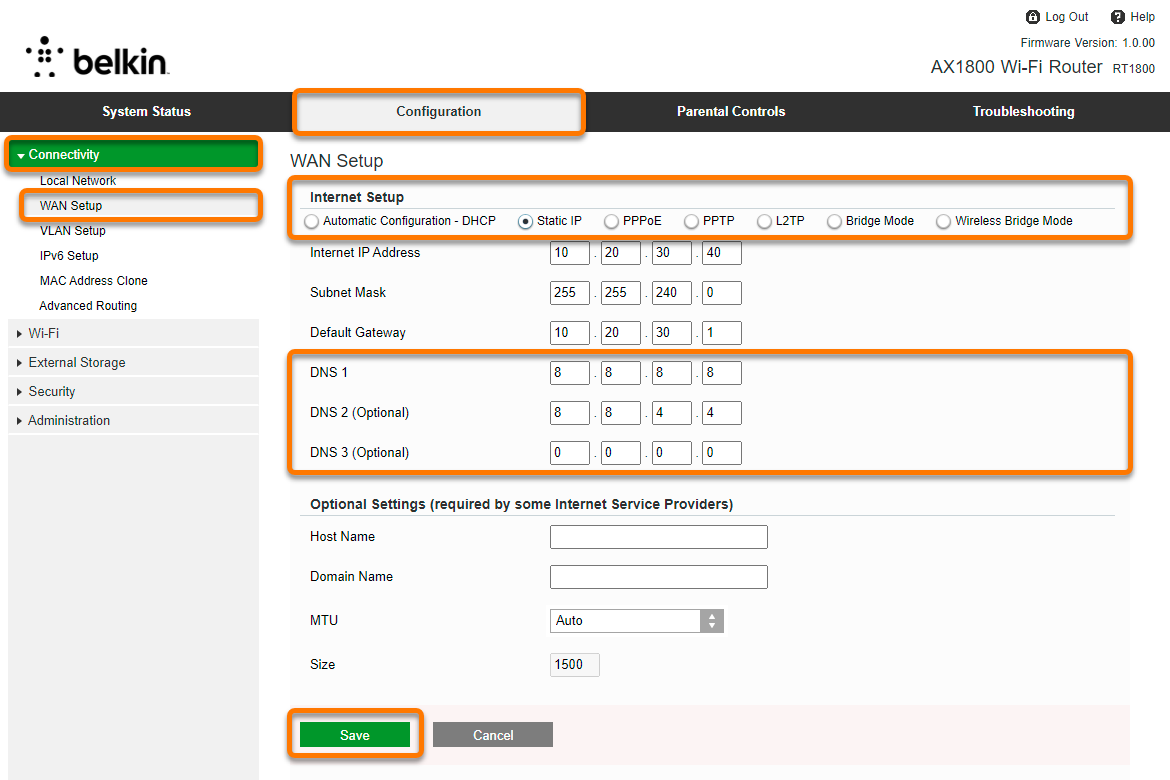
FTP passive or active is important for the majority of users, especially if they use their FTP clients behind a fire wall. Passive mode is easier to use than active mode and is compatible with NAT routers and firewalls.
FTP, or Internet protocol (IP), is an IP that allows files to move between computers by using a server and a client. The FTP protocol is composed of a data channel and a command channel, both of which are used to transmit information between the client and the server.
The client initiates command channel between the FTP server and the client by sending the PORT command to TCP port 21, The server then responds by connecting back to the specified client data port on its local data port, which is typically TCP port 20.
The FTP connection works as long as the FTP client does not have a firewall. In this situation, the client firewall will block incoming connections requests from the FTP server. This would prevent any file transfers.

The client can be switched from active mode to passive mode to fix this issue. In passive mode, the FTP client still initiates the command channel, but instead of sending a PORT command to establish the data connection, it sends a PASV command. The FTP Server then responds to the PASV Command by indicating what (random) data ports it has already opened for the subsequent file transfer.
In Active Mode, the client will also send a PORT to initiate a data channel between the FTP server and the client. This is a reverse data-channel, which is not as friendly to firewalls and NAT routers as passive mode.
Firewalls help secure networks by limiting the traffic that can be sent through specific ports. This is often done as a way to protect against unauthorised access. However, it can also lead to problems when you use FTP.
Network Address Translations (NATs) are a common way of protecting against unauthorised connections. These devices enable multiple computers sharing a single address. However, they can act as firewalls to block connections from the outside. NATs can be very effective at blocking external connections, but they are difficult to configure to support firewall support.
The Passive Mode was created in order to remove some of the burden from the client's side when it comes to firewall configuration. In passive-mode, the client continues to initiate the control channels on port 21, and instead of sending an PORT command sends a PASV. This command tells FTP to send the client an IP address with a port number.

If you are running Fetch with an Automatic Passive Mode feature enabled, you will automatically be switched to passive mode when Fetch is running on a firewall and receives an error trying to make a connection. You can manually activate passive mode if this doesn't help. Select the Passive Mode menu option in the FTP Settings.
The choice between active and passive is up to the client, but passive mode usually works better with NATs and firewalls. The client may be configured to use only a small range of high port numbers on the host, which limits the number that can potentially be blocked by the firewall. The server will be less at risk from a fire wall that blocks all traffic to a high level port. However, the firewall will still have security concerns.
FAQ
Can I use HTML & CCS to build my website?
Yes, you can! Basic knowledge of web design and programming languages such as HTML (Hyper Text Markup Language), and CSS (Cascading Stil Sheets) is required. These languages can be used to create websites which can then be viewed by everyone who has an internet connection.
Do I require technical skills to design or build my website?
No. You just need to be familiar with HTML and CSS. There are many tutorials available online that can teach both HTML or CSS.
Can I create my own website with HTML & CSS?
Yes! If you've read this far, you should now know how to create a website.
You now know how to build a website structure. Now you need to learn HTML and CSS coding.
HTML stands as HyperText Markup Language. You can think of it as writing a recipe. It would include ingredients, instructions, as well as directions. HTML is a way to tell a computer which parts are bold, underlined, italicized or linked to other parts of the document. It's the language that documents use.
CSS stands for Cascading Stylesheets. It's like a stylesheet for recipes. Instead of listing every ingredient and instructions, you create general rules about font sizes, colors, spacing and other details.
HTML tells the browser how to format a web page; CSS tells it how to do it.
Don't be afraid to ask questions if you don’t understand any of these terms. Follow these tutorials, and you'll soon have beautiful websites.
Which platform is best to create a website?
The best platform for designing a website is WordPress. It provides all the features you need to create a professional-looking site.
These themes are simple to install and modify. You have thousands of options for free themes.
Plugins can be used to enhance functionality. These plugins enable you to add social media buttons and forms to your contact pages.
WordPress is very user-friendly as well. To modify your theme files, you don't need to be able to code HTML. Simply click on an icon, and then select what you want.
There are many options, but WordPress is the best. Millions of people use it every day.
What Should I Include in My Portfolio?
All these items should be part of your portfolio.
-
You can also see examples of your previous work.
-
Link to your website (if possible).
-
Links to your blog.
-
Here are some links to social media pages.
-
Links to online portfolios of other designers.
-
Any awards you have been given.
-
References.
-
Samples of your work.
-
These are links showing you how to communicate effectively with clients.
-
Here are some links to show that you're eager to learn new technologies.
-
These links show that you are flexible.
-
You can find links that reflect your personality.
-
Videos showing your skills.
How to Create a Static Website
There are two options available to you when building your first static website.
-
Content Management System (a.k.a. WordPress): WordPress): You can download this software and install it on your computer. Then you can use it to create an essential website.
-
Creating a Static HTML Website: In this case, you'll need to write your HTML/CSS code. If you are familiar with HTML, it's easy to do.
It is worth hiring an expert if you want to build large websites.
But starting, you should probably go with option 2.
What is the cost of building a website?
It depends on what your website is used for. Google Sites might be free if your website is limited to information about you or your company.
If you want to attract more visitors to your website, however, you will need to pay for something stronger.
The most popular solution is to use a Content Management System (like WordPress). These programs allow you to create a website without knowing anything about programming. This is because the sites are hosted and maintained by third-party companies. You don't have any risk of being hacked.
Squarespace is another way to create a website. You can choose from a range of plans, ranging in price from $5 to $100 per monthly depending on what you need.
Statistics
- Studies show that 77% of satisfied customers will recommend your business or service to a friend after having a positive experience. (wix.com)
- In fact, according to Color Matters, a signature color can boost brand recognition by 80%. There's a lot of psychology behind people's perception of color, so it's important to understand how it's used with your industry. (websitebuilderexpert.com)
- Is your web design optimized for mobile? Over 50% of internet users browse websites using a mobile device. (wix.com)
- When choosing your website color scheme, a general rule is to limit yourself to three shades: one primary color (60% of the mix), one secondary color (30%), and one accent color (10%). (wix.com)
- It's estimated that in 2022, over 2.14 billion people will purchase goods and services online. (wix.com)
External Links
How To
How can I start as a UI Designer
Two methods can be used to become a UI developer:
-
You can also go to school and get a degree as UI Design.
-
You can also start your own business.
If you want to go through school, you'll need to attend college or university and complete four years of study. This includes psychology, computer science, marketing, art, and business.
You can also take classes at community colleges or state universities. Some schools offer free programs, while others charge tuition fees.
After graduation, you will need to find employment. If you choose to work for yourself, you must build your client base. You should network with other professionals to let them know that you exist.
Also, you can look for internship opportunities at companies that are specialized in developing web apps. Many companies hire interns to gain work experience before hiring full-time workers.
A portfolio will help you get more work once you have established it. Your portfolio should include work samples as well as details of the projects that you have worked on.
It's a good idea to send your portfolio to potential employers via email.
As a freelancer, you will need to market yourself. You can post your services on job boards, such as Guru, Indeed, Guru or Upwork.
Freelancers receive assignments often from recruiters who post open positions online. These recruiters seek qualified candidates to fill open positions within certain industries.
These recruiters typically provide the candidate with a project brief outlining the position's requirements.
Freelancers are not required by law to sign any long-term agreements. You should negotiate an upfront payment if your goal is to move forward.
Designers prefer working directly with clients over working through agencies. Although this might seem like a great idea, many people lack the necessary skills.
Agency workers usually have extensive knowledge about the industry they are working in. They have access the right training and resources to ensure they produce high-quality results.
Agency workers also receive higher hourly rates.
However, the disadvantage of working with an agency is not having direct contact with your employer.
Being a successful UI designer requires you to be self-motivated, creative.
You must also possess excellent verbal and written communication skills.
UI designers are responsible for designing websites by creating user interfaces (UI) and visual elements.
They are also responsible for ensuring that the site meets the needs of its users.
This requires understanding what information visitors want and how the website should function.
UI designers use various tools to create wireframes. Before they begin designing, wireframing allows them to visualize the page's layout.
You can find wireframe templates online. This makes it easy to make your own wireframes.
Some designers focus solely on UI design, while others combine UI design with graphic design.
Graphic designers use software such as Photoshop to edit images.
Then, they use Adobe InDesign for layout and page design.
Photographers capture images using digital cameras or DSLRs.
They then upload the pictures to a photo editing program where they add text captions, filters, and other effects.
The photographer saves the image as a compatible file format for the website.
It is crucial to consider all aspects when designing a website.
This includes research planning, wireframing and prototyping, as well as testing, coding, content generation, and publishing.
Research – Before starting any new project, it is important to conduct extensive research.
Planning - After you have completed your research, it's time to start creating a plan.
Wireframing: A wireframe is a sketch of a website or application.
Prototyping: Prototypes can help to ensure that the final product meets the initial vision.
Testing - Multiple rounds of testing should be done on the prototype to make sure it works properly.
Coding - Coding refers to the process of writing computer code.
Content Creation – This covers everything from creating copy to managing social accounts.
Publishing means uploading files onto a server and making the site accessible.
You will need to have a broad knowledge of different projects in order as a freelance UX/UI developer.
One example is that some companies only need wire frames, while others need complete prototypes.
Depending upon the type and scope of the project, you may be asked for specific tasks.
For instance, if your job is to create wireframes you might have to make several over the course of time.
If you're hired to create a complete prototype, you may be required to develop a fully functional version of the site.
It doesn't really matter what project you're working on, good interpersonal skills are vital.
You need to build strong relationships with potential employers as freelancers are hired primarily through referrals.
You must also be able communicate clearly both verbally as well as in writing.
A portfolio is an important tool in any freelancer's arsenal.
It showcases your work and demonstrates your ability to deliver high-quality results.
This is possible by creating an online portfolio.
It is a good idea to look for websites that are similar to yours to get you started.
These sites can be searched to determine which services they offer.
Once you've identified the best practices, it is time to start implementing them.
It's also beneficial to include links within your resume to your portfolio.